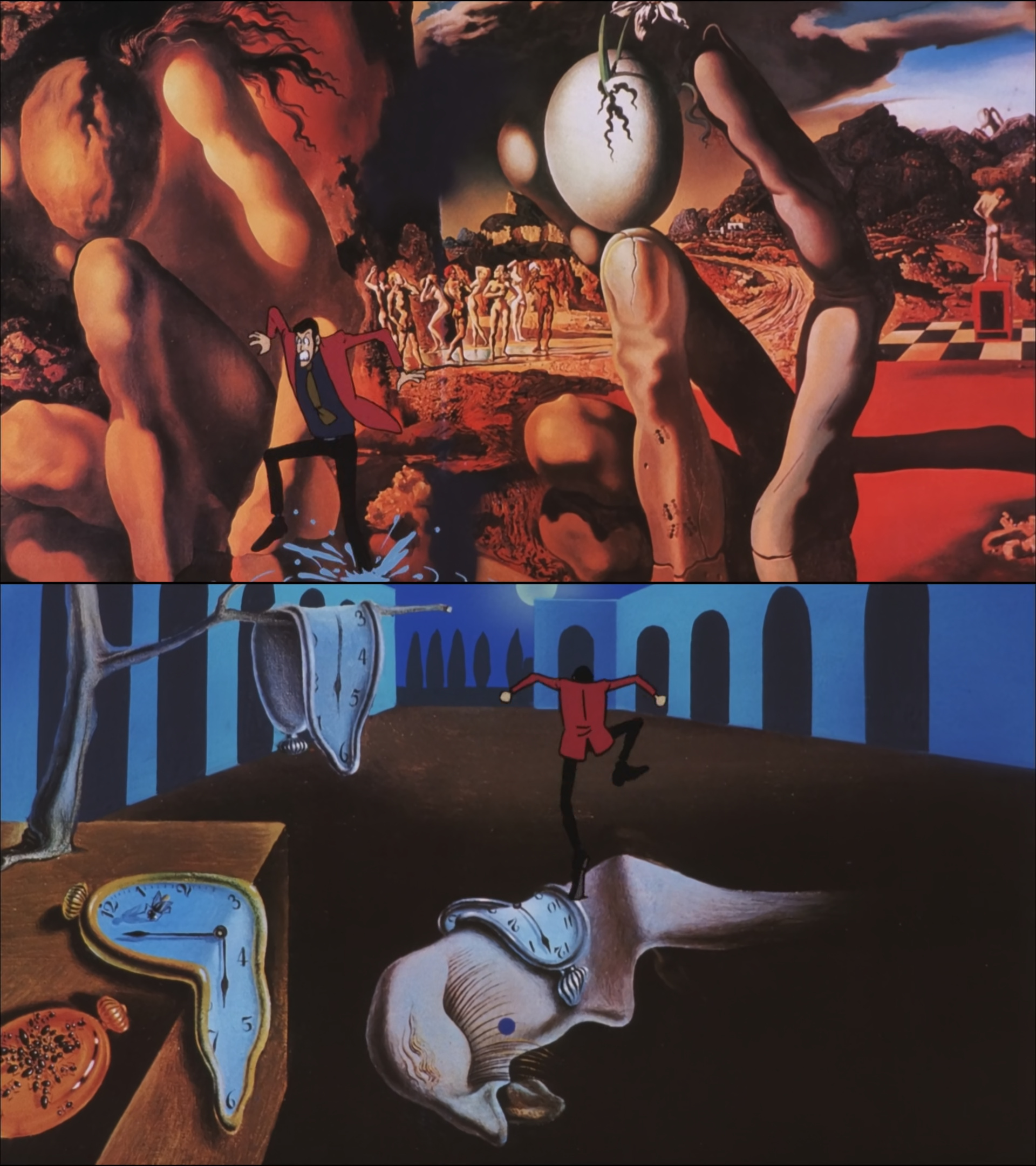Welcome to Maid Spin, the personal website of iklone. I write about about otaku culture as well as history, philosophy and mythology.
My interests range from anime & programming to mediaevalism & navigation. Hopefully something on this site will interest you.
I'm a devotee of the late '90s / early '00s era of anime, as well as a steadfast lover of maids. My favourite anime is Mahoromatic. I also love the works of Tomino and old Gainax.
To contact me see my contact page.

Lupin III: The Secret of Mamo, originally titled "Lupin versus the Human Clone", is a strange film. It was the first of many theatrical releases of the Lupin franchise but is overshadowed by its proto-Ghibli little brother Cagliostro that released the year after. It's not a particularly well loved film, and is mostly famous for having a ridiculous plot; but I really like this film. It touches on all the themes that I find the most interesting in Lupin narratives: namely those surrounding secret ancient truths and pseudo-historic mysteries. The eponymous antagonist Mamo has found the secret to immortality, the classic pursuit of evil. In fact he has gone further: his immortality has given him the insight of God and he has extended his spirit both forward and backward in times to the ends of the world. But its his house that I'm interested in. Being the self-proclaimed progenitor of all of human history, he has collected the gems of civilisation and built a grand palace that embodies a certain soul of culture. In particular he has the taste of architectural artwork, and Lupin's chase through parts of the palace show it off.
 ^ "Imaginary Prisons 2:7" by Giovanni Piranesi (1761)
^ "Imaginary Prisons 2:7" by Giovanni Piranesi (1761)
As he enters the estate he has a view off the main building: an impossible collection of Greek pillars, Roman arches, Arab domes, Gothic arches, Renaissance facades and a modernist spire all built on top of one another to form a mound of architectural decadence. It reminds me of the work of the 18th century artist Giovanni Piranesi with his endless spans of chaotically ordered masonry, and I'm going to say this isn't just a passing resemblance as we are about to be taken on a metaphorical trip through this line of art history.
 ^ Classical and Gothic architecture
^ Classical and Gothic architecture
As Lupin approaches the main structure we get shots of the two extremities of classical and Gothic architecture in the Doric and perpendicular styles respectively.
 ^ "Mystery and Melancholy of a Street" by Giorgio Chirico (1914)
^ "Mystery and Melancholy of a Street" by Giorgio Chirico (1914)
Next as Lupin enters the palace he finds himself in a labyrinth of hallways and courtyards. The shadow of a little girl runs past with a hoop and the shot cuts to the view of a Romanesque arcade. An exact replica of the 1914 painting "Mystery and Melancholy of a Street" by Giorgio Chirico. An artist whose lasting fame in Japan seems to precede that on his own continent. Lupin's pursuer finally catches up with him and makes chase. Seeing the Scooby-Doo chase through the painting is fun, and the pair escape off into the work of another staple of strange architecture: M.C. Escher.
 ^ Escher style geometry
^ Escher style geometry
The impossible geometry of Escher is world famous, and his "impossible stairs" are his best known works, as well as being the perfect location for a cartoon chase sequence.
 ^ "Acropolis" by Paul Velvaux (1966)
^ "Acropolis" by Paul Velvaux (1966)
Next into a weirder painting: that of Paul Delvaux's Acropolis. Delvaux was a Belgian artist known for dream scenes. They mainly depict classical architecture and naked women with vacant stares. His paintings are somewhat creepy, a hypnogogic spectacles that get weirder the more you think about them.
 ^ "The Metamorphosis of Narcissus" and "The Persistence of Memory" by Salvador Dali (1937, 1931)
^ "The Metamorphosis of Narcissus" and "The Persistence of Memory" by Salvador Dali (1937, 1931)
The final two painterly rooms the chase proceeds through are of the ever popular Salvador Dali. In particular "The Metamorphosis of Narcissus" and his most famous painting: "The Persistence of Memory". This chase has passed through rooms that get increasingly more dream-like. Starting with the extreme but plausible works of Piranesi up to the madness inducing dream-worlds of Dali. Now the madness seems to stop, the chaser loses Lupin and the weird corridors lead out into a quiet nighttime garden. Here in this deep portion of the palace Lupin finds two men: the great men of the 19th 20th centuries: Napoleon and Hitler. And beyond them still, we find the balcony of Mamo himself: who following the pattern would be the next great man of history, playing his harp (like Nero) on a balcony at the end of a staircase stretching out into the abyss, flanked with statues of Hellenic gods.
 ^ Lupin meets Napoleon, Hitler and Mamo
^ Lupin meets Napoleon, Hitler and Mamo
Maybe the only person who wouldn't get scared from such a journey is Lupin himself, because as we learn later, Lupin does not dream. And we soon learn that this grandeur of Mamo's is really just a pretension and means nothing to a man such as Lupin III, leaving his museum of civilisation Iliupersian ruins and his own immortal body in ashes.